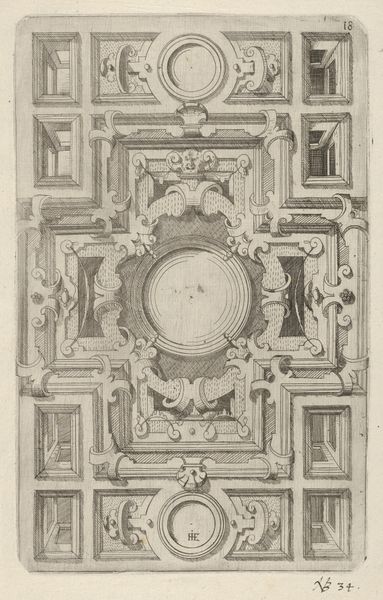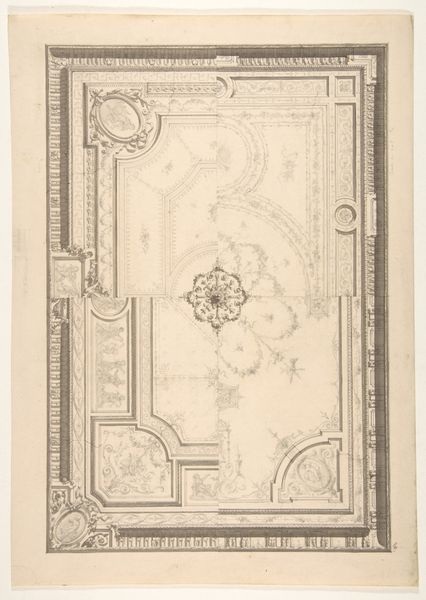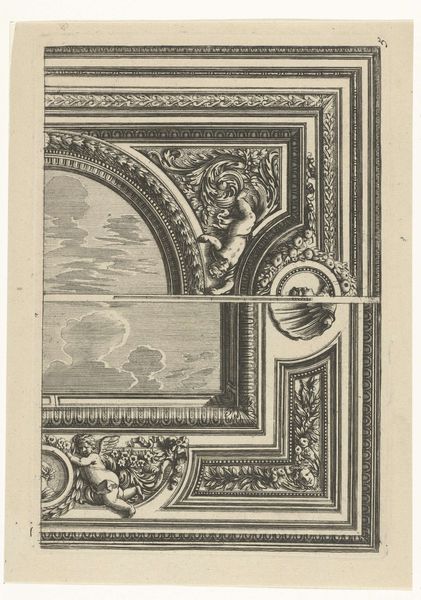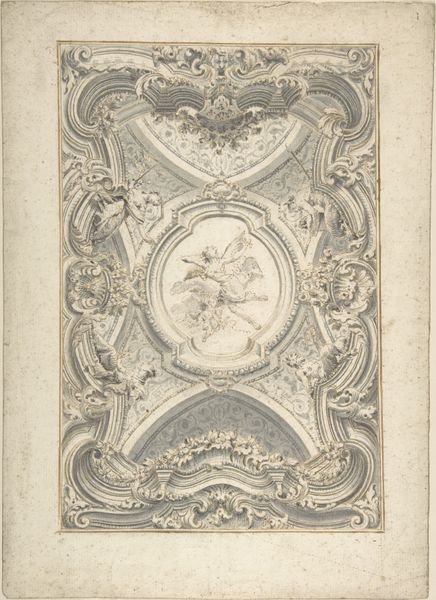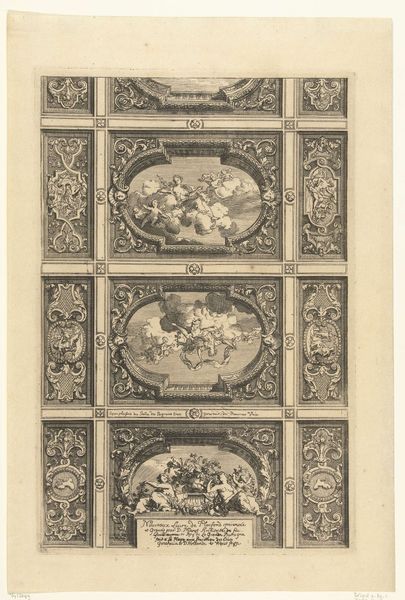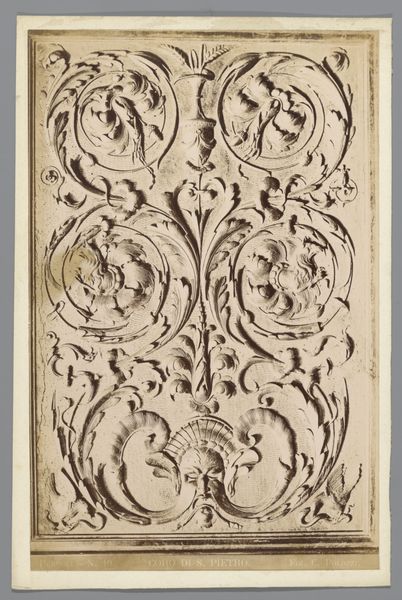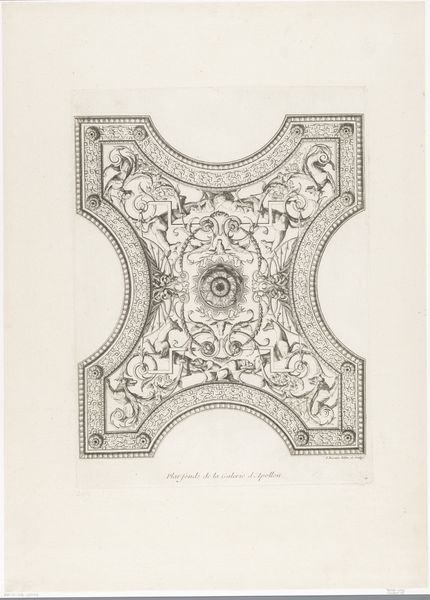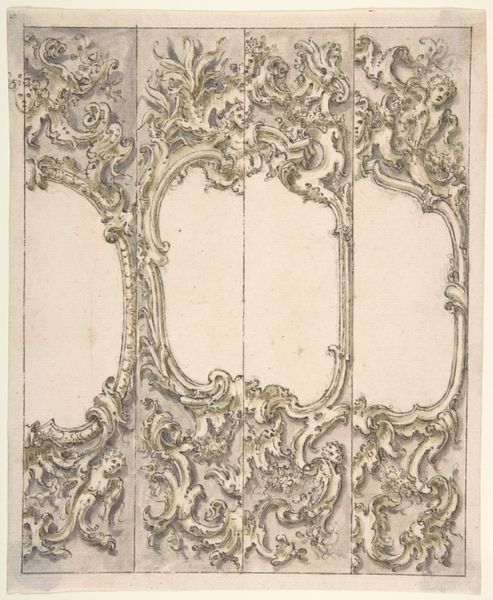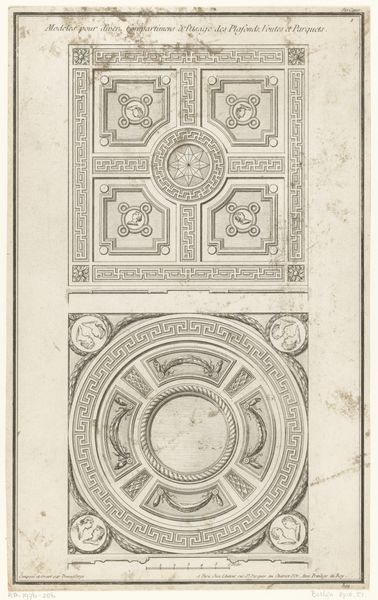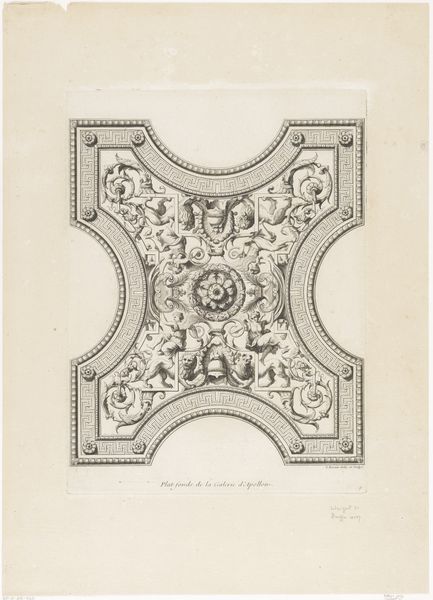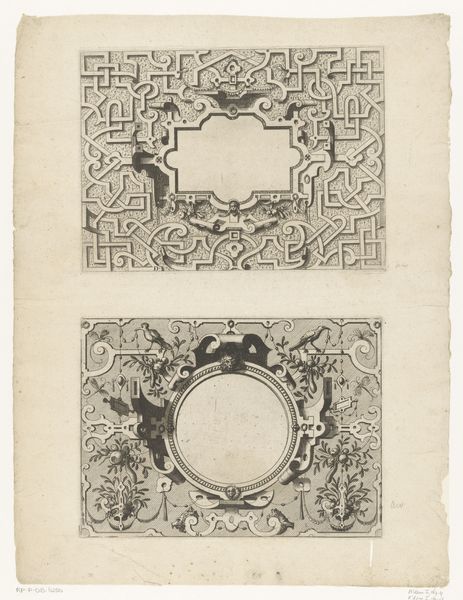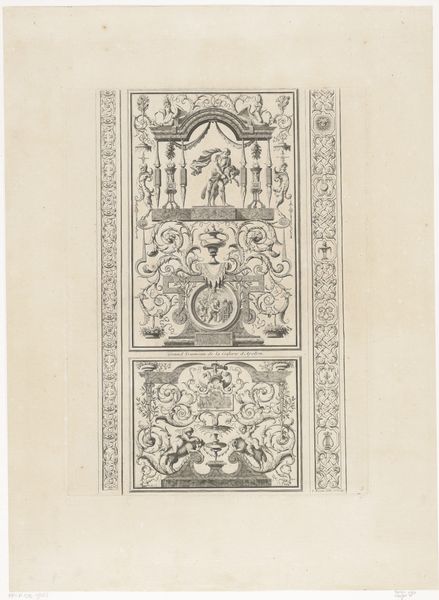
paper, engraving, architecture
#
baroque
#
perspective
#
paper
#
history-painting
#
engraving
#
architecture
Dimensions: height 273 mm, width 181 mm
Copyright: Rijks Museum: Open Domain
Curator: Here we have a piece titled "Plafond met trompe-l'oeil gewelf," or "Ceiling with trompe-l'oeil vault," created by Daniël Marot in 1712. Editor: My goodness, it’s incredibly intricate! So many embellishments; almost overwhelming in its detail. I am just trying to imagine the sheer amount of labour to physically realise this vision at such scale. Curator: Exactly! This is a fine example of Baroque style. Marot was known for his architectural designs and interior decorations, significantly impacting the tastes of the European elite. What you see here is actually an engraving on paper. Editor: Which, let’s face it, means it's a reproductive medium. Think of the implications – access to this aspirational imagery filtering down, sparking desires for more opulent interiors in new segments of society. Who was commissioning these prints, and why? Curator: The market for prints like these grew substantially during the period. Disseminating taste and design trends were highly profitable to printers and provided influential patterns for various artisan workshops. Editor: The illusion of depth here, the use of perspective...it’s designed to impress, to create an awe-inspiring effect in, presumably, a grand hall or palace. It transforms a simple ceiling into something celestial. Curator: The trompe-l'oeil technique was extremely popular, allowing patrons to evoke grandeur, status, and refined tastes through interior architectural embellishments. Think of the powerful imagery of history paintings often included and its direct appeal to class identity and cultural values. Editor: Absolutely, but at what cost? Did the production methods rely on underpaid artisans? Where were the materials sourced, and what were the ecological costs? Those engravings, while beautiful, mask potentially exploitative processes. I wonder about the engraver and their skill as part of the story here as well. Curator: These are valid questions. Indeed, considering the socio-economic contexts of production unveils a more complex and complete understanding. Editor: Seeing art this way pushes beyond aesthetics into an interrogation of systems – production, labor, power…It prompts a more radical understanding, I suppose. Curator: Yes, this nuanced perspective helps us truly appreciate both the visual brilliance and the underlying structures of art historical importance. Editor: So it's not just about looking up, but also digging deeper into what lies beneath the surface, behind the artistry. Fascinating.
Comments
No comments
Be the first to comment and join the conversation on the ultimate creative platform.

